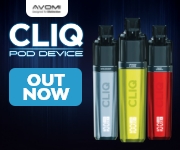So are you going by smell when you're getting the concentrate right, Leigh? I assume that you don't vape a concentrate?

You don't ever go by 'smell'
While I do do that with food often, e-liquid flavours are made from chemical flavourings and the smell isn't very indicative of what's going on, your sense of smell is tuned to pickup natural cues.
I make liquids the same way leigh does. I play about with flavours and come up with a recipe, and run several revisions at low quantities (typically 30ml) until I'm happyish.
then I multiply the mix up to 250ml or so and test that and tweak it as required, at this point I send out samples to some of my testers.
finally when I have a recipe I'm happy with I make up several litres of flavouring. That gets left for a day before I use it so it's all well mixed.
to make finished liquids I then mix in x% flavour x% nicotine x% VG x% PG according to the recipe. If it's a very large mix then I measure by weight, if it's a smaller mix I use measuring cylinders and measure by volume.
Steeping is a chemical reaction between nicotine and flavouring*. Nicotine is very reactive and it alters the flavours in a mix over time. Some take less time, some take more time. Usually steeping is done by about 2 weeks. So we steep the whole batch for 10 days and then bottle so by the time it gets to the customer it's almost always 2 weeks old.
you can speed up steeping and increase the speed of the reaction using heat or UV light or mixing it with lots more oxygen (air)
* There is more going on in steeping, things like the various things in a liquid mixing thoroughly evenly, some of the flavours used develop and 'age' on their own without the help of nicotine, but they are a smaller portion of what's going on.















